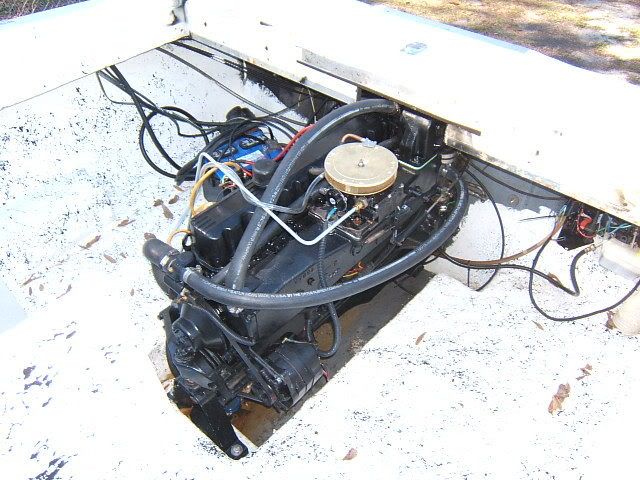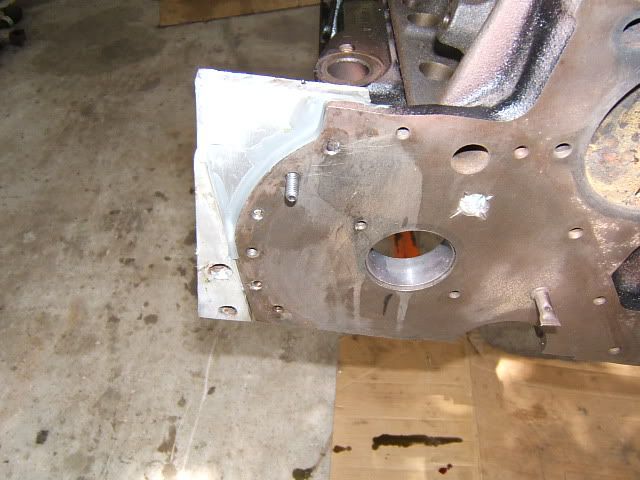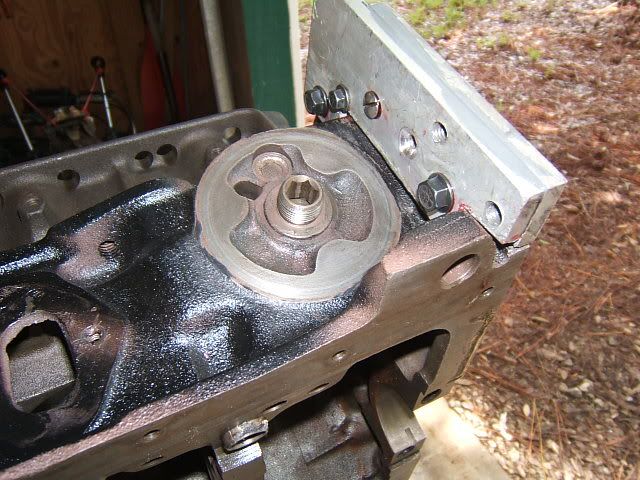Update:
Its been a very busy summer and I've been trying to get as much boating in as I can with my other boat before the summer was over. The last 2 months however I have been able to devote some time to the Glastron.
I got the motor up to temp a few times and set the timing and everything seemed good while running on the stand. I finally got a chance to drop the motor in the boat which wasnt too bad. It took me a few hours but I didnt have an extra hand in doing so and I went very slow. For anyone thinking of doing an engine pull or installation this was my method of performing this work with a standard engine house. I basically lowerd the trailer as close the ground as I could. Removed both wheel and left just enough room under the axle to fit a low profile floor jack. Then I raised the tongue up as high as I could. With my hoist in its almost maximum raised position I was able to clear the stern of the boat. I did have a load leveler that helped by tilting the engine in my favor to clear the tansom.
So the engine was installed, aligned with the alignment tool. Took some messing around but eventually got it nice and straight. I installed the drive and was good to go! I had to do some other things with the boat too but I'll keep this thread just about building the merc 165.
Fast forward to this past weekend - I did a float test to see if the bellows that I replaced would hold. The boat say in the water for about 30 min while still hooked to the trailer just in case. Not water seeping through anywhere. Great! I also ran the motor for a few min but there was water leaking from exhaust elbow to transom pipe coupler. I had forgot to tighten all 4 clamps apparently. I shut it down and pulled the boat out of the water since the ramp started to get busy. I had went to a ramp that I thought no one used since it was on a very shallow part of the river but there were probably 5 or 6 boats out there.
The next day my girlfriend and I took the boat to a small local lake for a sea trial. It was a pretty busy day there since it was labor day weekend but everything went fairly well. The glastron didn?t come with a temp gauge, only a temp light and the original temp switch sender was destroyed when I took it out. I had put in a proper sender in its place however I don't have a temp gauge on the panel yet. I do have a new set of full gauges coming in a few days. For my sea trial I went and purchased a mechanical gauge that comes with a capillary tube and some fittings. I installed this in the hole right next to the temp sender on the thermostat housing so it would read the same temp.
If I recall I put a 140? t stat in there. I kept an eye on the gauge and it never went above 160 ish. We trolled mostly and I did a few almost wide open cruises for maybe about 1-2 minutes each. The engine really seems to like it at 1/2 throttle on up. This could be due to my prop too since I just threw on what I had. If you get after it a little it hops up on plane almost immediately and holds 40-42mph quite easily. That was with 2 people, 15 gallons of fuel and a few tool boxes full of tools.
After the few runs I checked again at the temp and it seemed like it was good. Around the 165-170? mark. I put my hands on the riser and intake/exhaust manifold to see how hot they were and they were hot. I didn?t get burned but they were too hot for me to comfortably keep my hand there for an extended period of time. On my Merc 260 the risers stay warm but basically cool enough to keep my hand there. I don?t usually check the exhaust manifolds on that during operating temp so I can?t compare those. After I saw that they were a little hot we basically shut it down for a few min and then decided to head back to the ramp. It was getting dark anyway and my bow light is so old and dilapidated that its blue and clear instead of red and green.
I think I?m going to invest in an IR thermometer/gun and wait until my electronic temp gauge comes in. But going by the gauges everything looks ok, if you touch the riser I feel like its too hot. Any ideas of what to check? I have installed a new impeller with pump housing and base, new water tube between bell housing and gimbal housing. I had the pipe on the inside of the boat that attaches to the transom assembly off and the shutters are both there with no blockages. I don?t have a new engine water pump but I inspected it and it seemed ok. There isnt much to it so I figured if it wasn?t deformed and didn?t leak then it was good.
Maybe I?m just being paranoid?
Here are a few pics of her in the water. It was darker and my phone is crap with pictures but you get the idea.


























